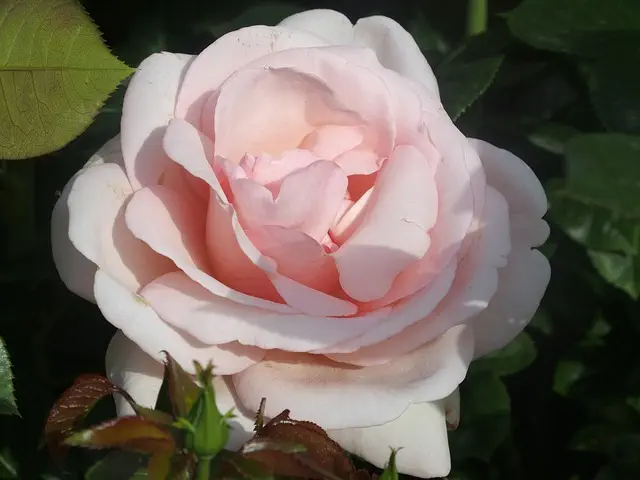The article provides an in-depth look at Malaysian Kratom (Mitragyna speciosa), with a focus on its unique alkaloid profiles influenced by the country's specific environmental conditions. Notably, the humidity and temperature fluctuations in Malaysia contribute to the potency of the Kratom buds, which are rich in active compounds like Mitragynine and 7-Hydroxymitragynine. The presence of additional alkaloids, especially those from Kanna fermented products, adds complexity to its effects. Research is ongoing to understand these unique properties, which may differ from other regions. The fermentation process for Kanna not only changes the chemical makeup of the alkaloids but also affects how they interact with the human body. This article also delves into the sustainable cultivation practices and proprietary fermentation techniques that ensure the high quality and consistency of Malaysian Kratom products. It highlights the historical use of Kratom in Malaysia's indigenous cultures, where it has been traditionally used for its medicinal attributes, and how modern wellness practices have adapted to include kanna fermented preparations, offering a different experience through the alteration of alkaloid composition. The evolution of Malaysian Kratom represents a fusion of cultural traditions with contemporary scientific understanding, reinforcing its relevance in holistic health.
Discover the unique properties of Malaysian Kratom buds, a natural wonder revered for their alkaloid content. Our exploration delves into the potent profiles of these botanicals, highlighting their distinctive characteristics. We’ll traverse the intricate cultivation and harvesting methods of Malaysian Kanna Fermented Kratom, which are meticulously practiced to maintain superior quality and efficacy. Furthermore, we’ll examine the traditional roots and contemporary applications of this herbal powerhouse, shedding light on its contributions to health and well-being. Join us as we uncover the essence of Malaysian Kratom buds, a botanical treasure with far-reaching benefits.
- Unveiling the Potency of Kratom Buds from Malaysia: A Deep Dive into Their Alkaloid Profiles
- The Cultivation and Harvesting Process of Malaysian Kanna Fermented Kratom: Ensuring Quality and Potency
- Exploring the Traditional Uses and Modern Applications of Malaysian Kratom Buds in Health and Well-being
Unveiling the Potency of Kratom Buds from Malaysia: A Deep Dive into Their Alkaloid Profiles

Kratom, a plant indigenous to Southeast Asia, has garnered global attention for its diverse alkaloid profiles and their potential effects. Among the regions where Kratom thrives is Malaysia, where the unique environmental conditions contribute to the potency of the Kratom buds grown there. The Malaysian climate, with its specific humidity and temperature variations, influences the alkaloid content in the leaves, particularly Mitragynine and 7-Hydroxymitragynine, which are considered the primary active compounds. These conditions can also affect the presence and concentration of other alkaloids, such as those found in Kanna fermented products, adding to the complexity and potential efficacy of the plant.
In the realm of research, scientists have been intrigued by the alkaloid profiles of Malaysian Kratom buds due to their unique composition that may differ from those cultivated in other regions. The alkaloids within these buds are subject to further study, as they may offer distinct properties or effects. The fermentation process, as seen with Kanna, also plays a role in altering the chemical makeup and enhancing certain alkaloid levels, which could have implications for the plant’s interactions with the human body. This unique interplay between the environment, the fermentation process, and the inherent characteristics of the Kratom plant underscores the importance of understanding the specific qualities of Malaysian Kratom buds in comparison to other strains available globally.
The Cultivation and Harvesting Process of Malaysian Kanna Fermented Kratom: Ensuring Quality and Potency

Malaysian Kratom, a botanical known scientifically as Mitragyna speciosa, has garnered significant attention for its unique alkaloid profile and potential benefits. The cultivation of this plant in Malaysia is characterized by the region’s optimal climate conditions, which include consistent humidity, rainfall, and temperature that mirror Kratom’s native environment, fostering a thriving ecosystem for the plant to flourish. The process begins with meticulous selection of seeds sourced from high-quality strains to ensure genetic integrity and potential alkaloid yield. Farmers employ sustainable agricultural practices, such as organic fertilization and crop rotation, which not only preserve the soil’s health but also contribute to the purity of the Kratom leaves.
As the plants mature, they undergo a unique fermentation process, which sets Malaysian Kanna Fermented Kratom apart. This controlled fermentation enhances the alkaloid content and is critical in maintaining the product’s potency. The leaves are handpicked at peak maturity to guarantee the highest concentration of active compounds. Following harvest, the leaves undergo a proprietary fermentation technique that involves precise temperature and humidity control. This process not only preserves the alkaloids but also helps to degrade any unwanted plant components that could affect the quality of the final product. The end result is a consistently potent and high-quality Kratom that adheres to strict quality standards, providing users with a reliable and effective experience. The commitment to maintaining the integrity of the Kratom from cultivation to harvest ensures that each batch meets the demands of discerning consumers looking for authentic Malaysian Kanna Fermented Kratom.
Exploring the Traditional Uses and Modern Applications of Malaysian Kratom Buds in Health and Well-being

Malaysian Kratom buds, derived from the Mitragyna speciosa tree, have a rich history of traditional uses that stretch back through generations within the country’s indigenous cultures. These buds are renowned for their medicinal properties and have been employed in various folk remedies to alleviate pain, enhance energy levels, and promote overall well-being. Historically, the local communities utilized these buds in teas and tonics, appreciating the plant’s natural capacity to invigorate and soothe simultaneously. The alkaloids present within the Kratom leaves, particularly mitragynine and 7-hydroxymitragynine, interact with the body’s opioid receptors, offering a range of benefits that align with holistic health practices.
In modern times, the applications of Malaysian Kratom buds have expanded beyond traditional remedies to include a broader scope of wellness routines. The advent of fermentation techniques, such as those seen with kanna fermented preparations, has further diversified the ways in which Kratom can be utilized. Fermentation is believed to modify the alkaloid profile, potentially enhancing certain effects and providing a distinct experience from non-fermented forms. This modern twist on an age-old tradition allows individuals to experiment with the plant’s effects in new ways while seeking natural alternatives for health concerns. The exploration of Malaysian Kratom buds, therefore, is not only rooted in cultural heritage but also continues to evolve with contemporary scientific understanding and interest in botanical supplementation for health and well-being.
Malaysia’s Kratom buds, rich in unique alkaloid profiles, have long been a subject of intrigue due to their diverse effects and potential health benefits. The meticulous cultivation and fermentation process of Malaysian Kanna Fermented Kratom ensure its unparalleled quality and potency, setting a standard within the industry. Traditional uses of these buds intertwine with contemporary applications, showcasing their adaptability in promoting health and well-being. As this exploration of Malaysia’s Kratom buds concludes, it is evident that they offer a significant contribution to both traditional practices and modern wellness strategies, making them an object of continued scientific interest and personal use around the globe.






